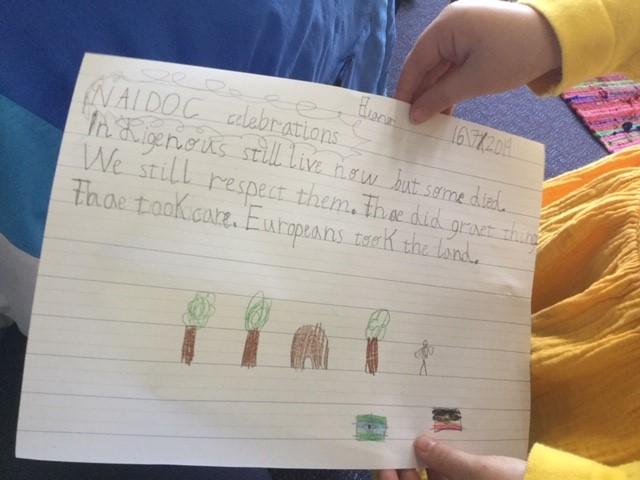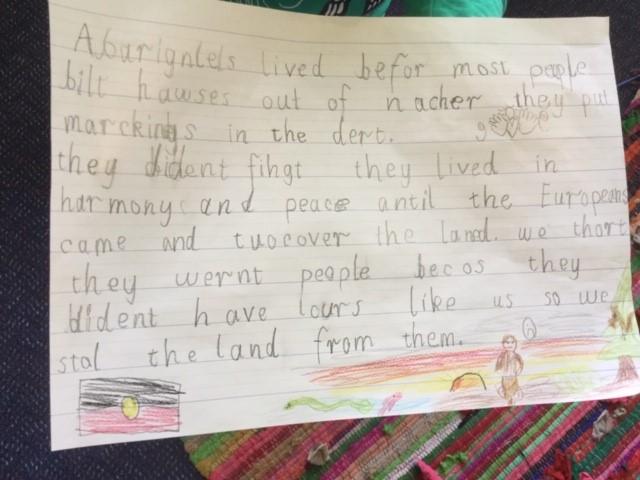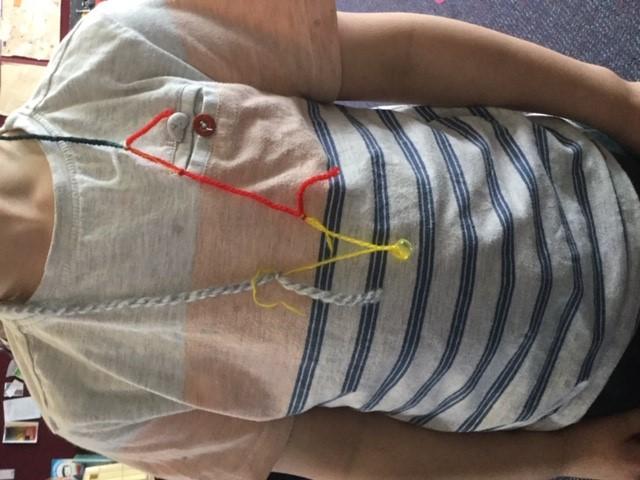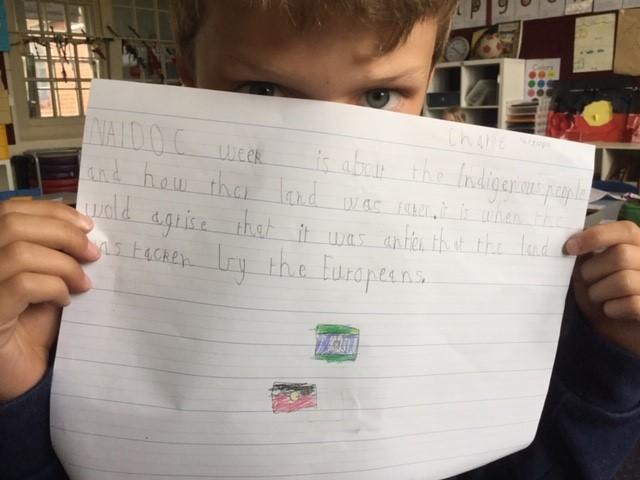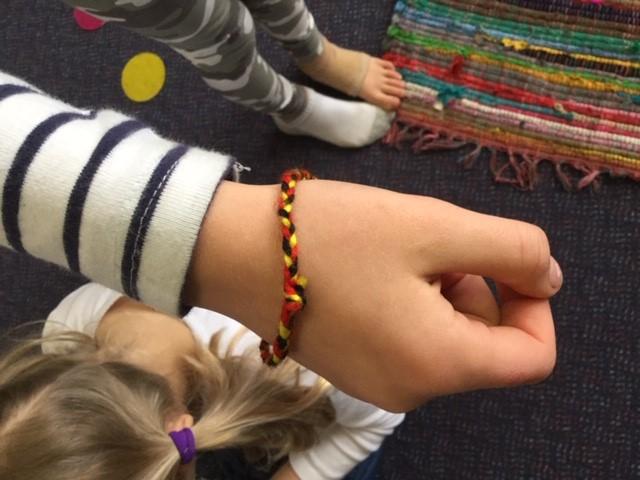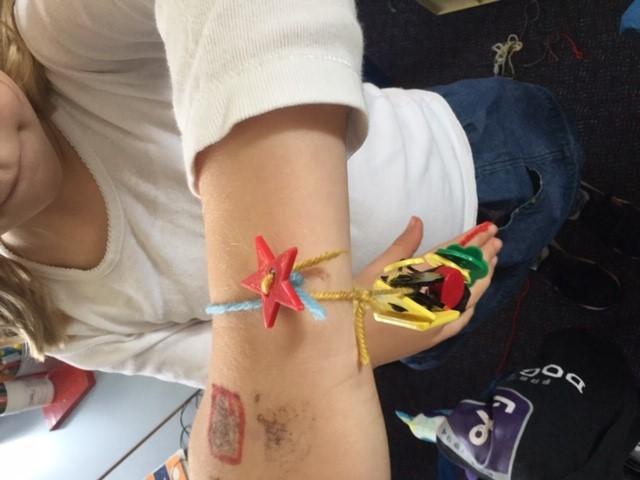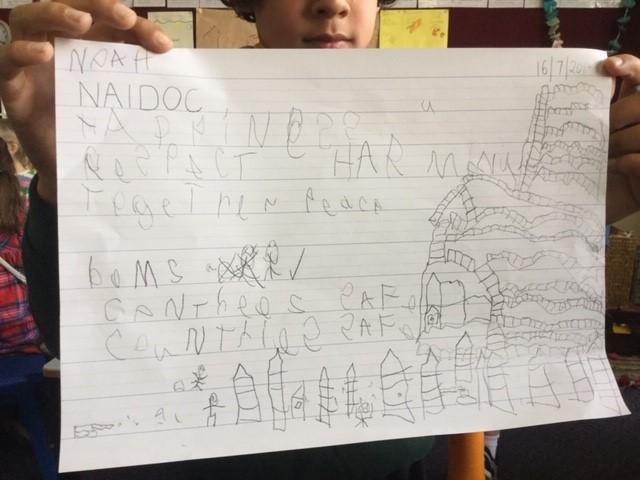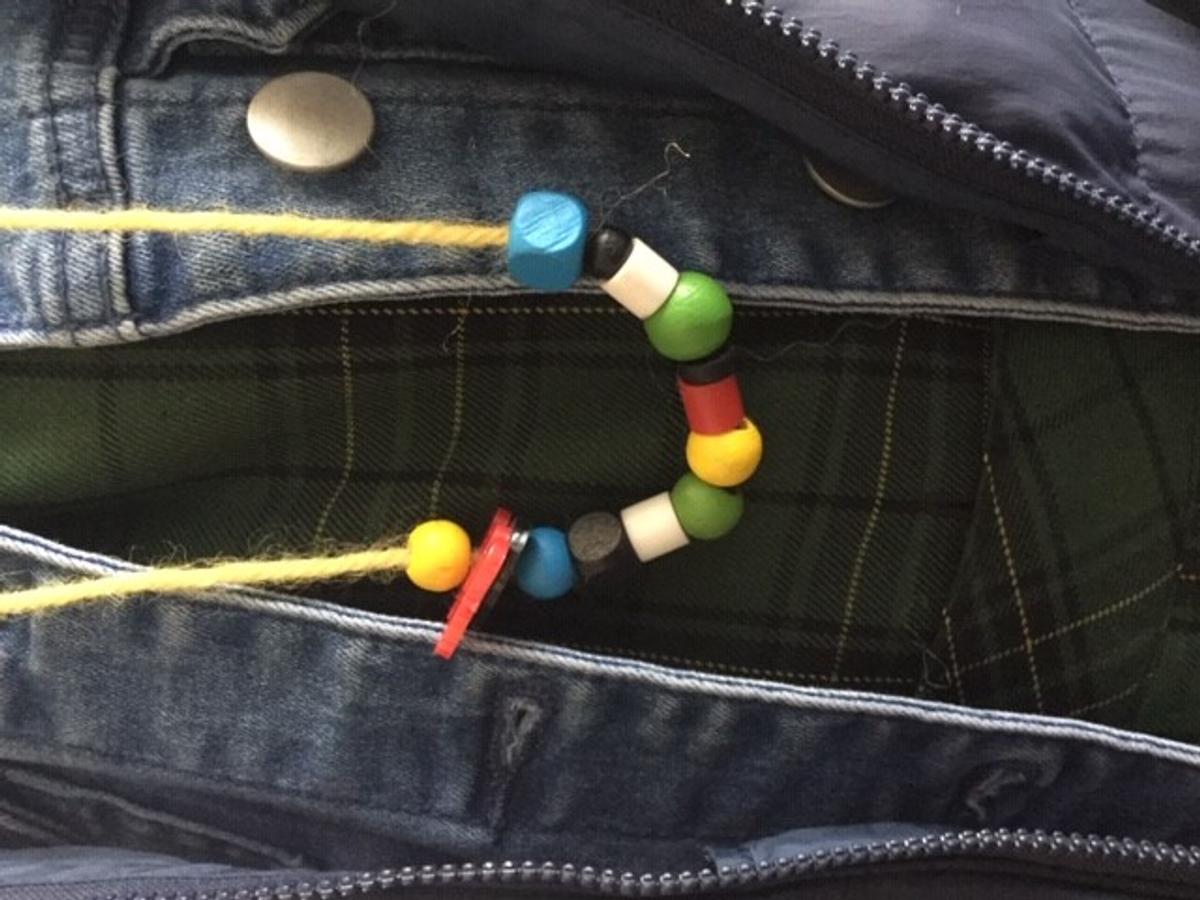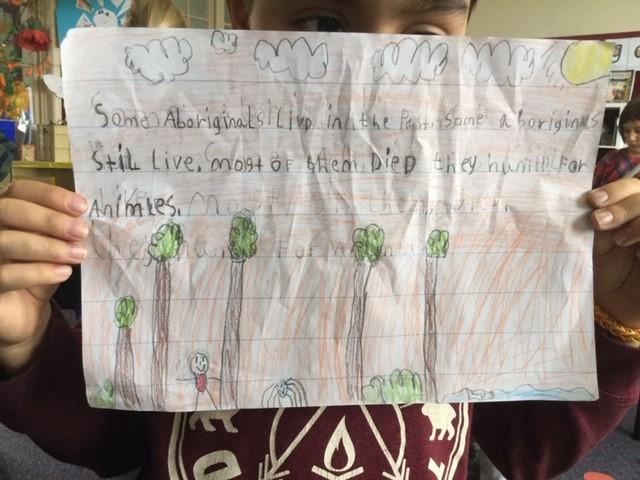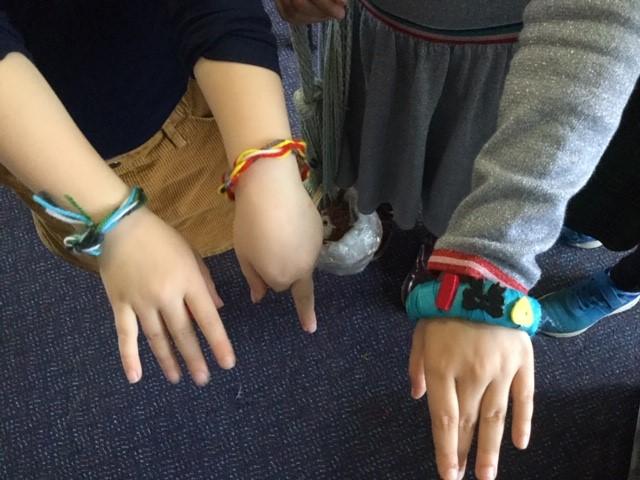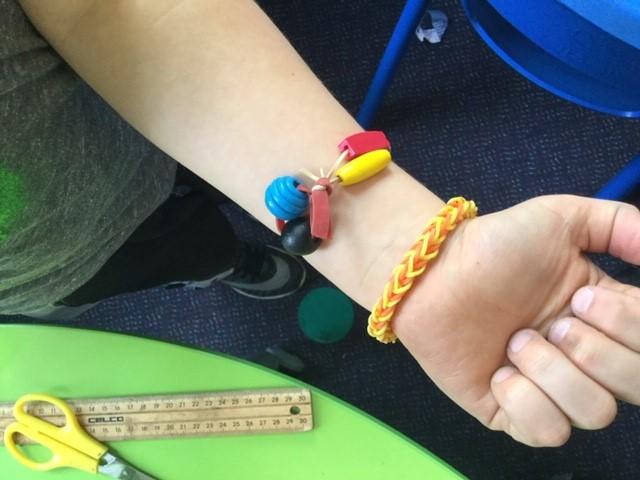school life
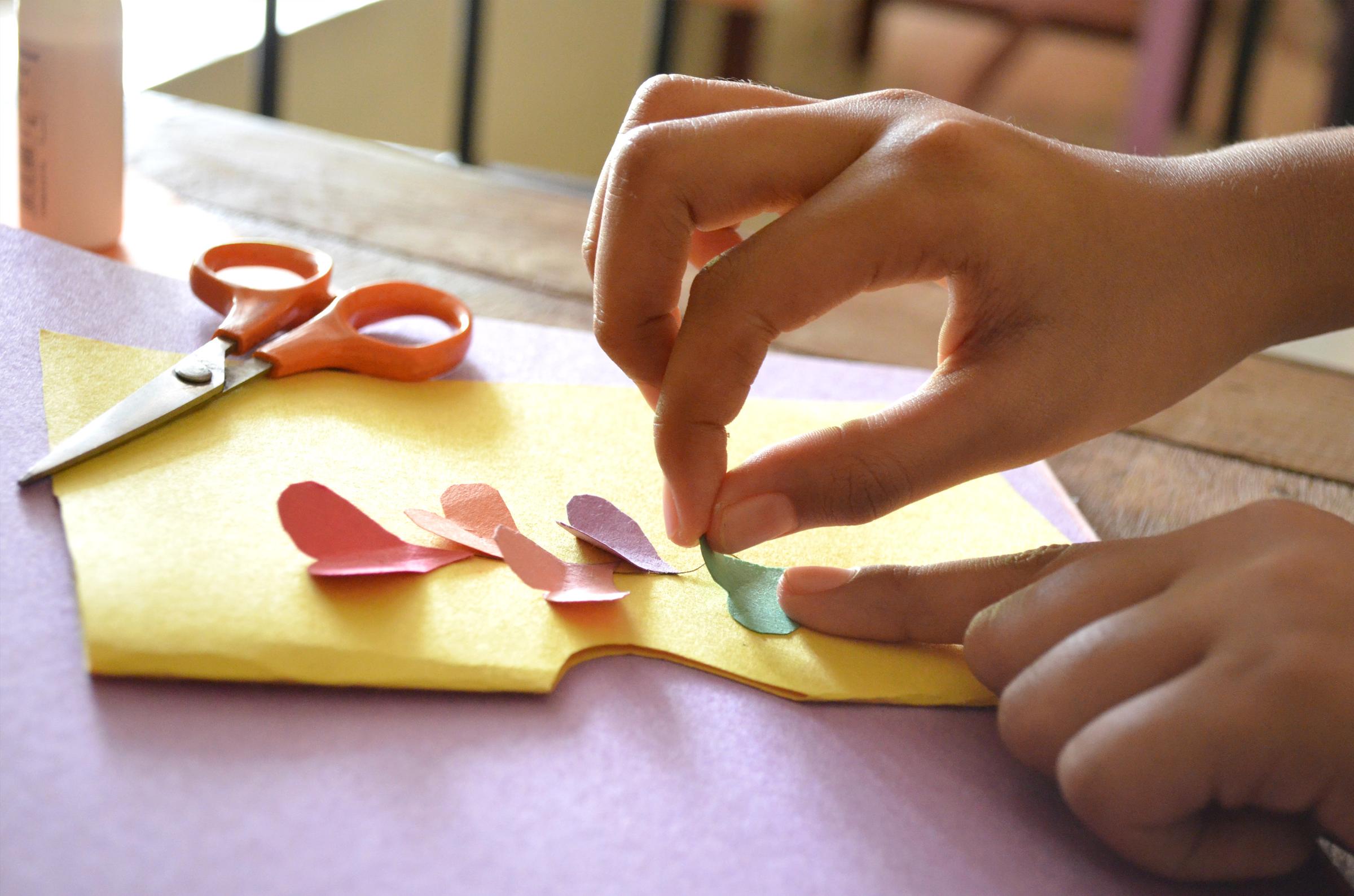
NF
This week 1/2A celebrated NAIDOC Week and the culture & achievements of Aboriginal and Torres Strait Islander peoples. Necklace making is a traditional part of Aboriginal culture. We made friendship necklaces and bracelets using up-cycled materials.
capital works
Thank you everyone for completing yet another survey for our school, when sharing your thoughts and opinions with the VFM/Capital Works survey. By the closing time we had 153 responses, which is a fantastic hit rate - thank you! The information gathered from students, families, staff and school council has been used to help define a vision for our school’s potential future of amenities and infrastructure. The first phase of this process has almost been completed but before we start the masterplanning with our architects, we need to find architects!
This week three architecture firms visited the school, along with representatives of the VSBA. Each firm met with myself and two members of the school community to discuss the funding campaign, the school’s needs and the possibilities for our futures. These architects are currently designing a brief presentation to share at an interview in order to help us identify which firm will be best suited to our school and our dreams. These interviews are set to occur in August and I will be sure to communicate how they go.
senior cinema excursion
Tuesday this week the senior school went to see 2040, a movie about our future and how to protect it. It first showed sustainable methods and solutions people all over the world are using to get energy, food, education, and transport. It then showed how these methods could look in 2040.
This movie was important for all of us to see. Although it was thought of as just ‘a boring doco about the environment’ some got a lot out of it. We were told about how our earth ‘would’ look if we drive politicians and put work into the future for my generation. The movie showed hope with actual and efficient solutions. Every single element had been thought out so we know it will work. The movie was very much worth seeing.
This positive perspective of our future was almost completely new to me.
When we talk and learn about climate change we are given facts and predictions that are all negative because of the bad path our earth is on. In the movie, we were taught about energy. We were given information about coal and its effect but it was countered by a brilliant solution of shared energy using grids of solar panels. I feel as though this new positive outlook meant instead of leaving the cinema feeling hopeless of our future, I am driven to help and protect our earth.
By Lucinda Hart.
(JARS).
seniors
Recognised as an essential skill for the 21st-century workforce, collaboration is a massive focus in our school. On Thursday, with this in mind and as a way to have fun around the theme of collaboration, the Senior School played games, created artwork and practiced mindfulness in the name of teamwork.
We were joined by Hayley from Half Moon Mindfulness and Meditation who helped us to share our reactions to each other, challenges and opportunities. We spoke about the need to be true to ourselves but still be present in the moment and kind to each other.
We played a game called, “Cross the river of deadly crocodiles while carrying the egg of destiny”. As a team we had to listen to each other and, using only three objects, cross the filthy river of doom without dropping the precious egg. Communication was critical and the biggest part of that in this game was making room for each other’s ideas.
Teamwork with Tim saw us playing games in which we had to decode meaning, take each other’s suggestions on board and be successful as a team. We learned a lot about each others personality and crazy skills!
We used teamwork to paint a collective artwork entitled the Field of Flowers. This artwork will then be displayed in our classrooms.
maths
Last term we had the privilege of running a numeracy family night which was attended by lots of members of our community. After the session, we asked for feedback on what parents want to learn more about and the responses were informative and exciting! Over the coming weeks, we will endeavour to give you more information on different approaches we use at school, as well as some practical activities you can use at home. The first response to the question “next time I’d like to hear more about…” that jumps out at me is ‘underlying research to support this approach’. This has been something Jessie and I have been discussing amongst ourselves and we were discussing how to us, it makes sense, it is exciting and we’ve had the benefit of listening to experts discuss why this is the best practise but just because it makes sense to us and we have a good understanding of the why, doesn’t mean everyone else has!
So, why are we doing this?
What is the productive struggle?
During our info session, Jessie and I were discussing the struggle. That is, exposing students to a task and letting them have a go first before the teacher helps them. This is different to the traditional approaches to teaching where the teacher is up the front explaining the problem and then the students are asked to complete a task. We are asking teachers to start by giving the students a task to do, letting them work on it for a bit and then stopping and discussing what strategies they are using, how they have gotten started, what they might need extra support with and so on. As you can see from those brief descriptions the two structures are quite different but there is research around this approach and why it is best practise.
Why is the struggle so important?
People can be quite lazy, it’s just part of being a human! Think about this: if there is a job we don’t really like doing (we might not be in the mood or it might be too tricky or time consuming) we are going to happily let someone take over that task and do it for us. Sometimes in our incredibly busy lives we just want to sit back and let someone else do it. But what do we get out of it? My dad is king of not letting me struggle (one of the benefits of being an only child!). The other day I asked him to teach me how to start the lawn mower (I know, by 29 this is a skill I should have already mastered!). I wanted to know how to use it so the next time the grass was long, I would be able to mow it. Dad being the caring father that he is instead mowed the grass for me. I was happy that the grass was cut and a chore was ticked off the list, but I still was missing that skill. I wasn’t able to do it myself and have that experience of mowing the backyard and feeling like I’ve achieved something. This is the same as in the classroom. Sure, it would be easier for the student to listen to the teacher (no doubt tuning out when the teacher was talking too much) and then do the activity that was just modelled for them. Or to try something, realise it is too hard and then have the teacher step in and show them how to do it, but where is the learning opportunity or the moment to say AHA! That didn’t make sense before but now that I’ve worked through it I get it. In the article which is linked below ‘Challenging tasks lead to productive struggle’ there is a quote in there that states “teachers need to provide opportunities for productive struggle as it is significant and essential to learning mathematics with understanding”. The philosophy behind this type of learning is the idea that mathematics isn’t just about rote learning, it is about a deep understanding of concepts, persistence, acknowledgement that learning mathematics takes effort and practice, using strategies from past learning, extending themselves, learner resilience and thinking flexibly. Challenging tasks and the struggle isn’t just about numeracy, it is about learner resilience and the understanding that learning can be uncomfortable, tricky and confusing but that is part of the process and it is important not to shy away or protect children from that, it is about exposing them to those feelings and celebrating the initial feeling of confusion that lead to the feeling of success.
What does the struggle look like in the classroom?
Whilst we don’t want to give too much away (the struggle will be the topic at our next info night!), I think this quote sums up the struggle well. Taken from the article, Teachers holding back from telling: A key to student persistence on challenging tasks by Doug Clark and Anne Roche “Sullivan,
Cheeseman, Michels, Mornane, Clarke, Roche and Middleton (2011) characterised challenging tasks as those which require students to:
• plan their approach, especially sequencing more than one step;
• process multiple pieces of information, with an expectation that they make connections between those pieces, and see concepts in new ways;
• engage with important mathematical ideas;
• choose their own strategies, goals, and level of accessing the task;
• spend time on the task;
• explain their strategies and justify their thinking to the teacher and other students;
• extend their knowledge and thinking in new ways”
Here are some examples of challenging questions that students could do. These are taken from an amazing book by Peter Sullivan called ‘Open ended maths activities: using good questions to enhance learning in Mathematics” (a sample of this book will be in further readings so you can get a feel for it). This is a book that I discovered a few year ago and it is one I use regularly. They are adaptable and engaging and always hook kids in. For example:
How many different ways can you make 20c?
How many different ways can a square be cut into quarters
What numbers can you make that has a 9 in the ones place and is under 100?
2_6 + _8 = _2_. What might the missing numbers be?
Make a list of some objects that have a mass between 200 g and 500 g.
Using 12 square tiles how many different rectangles can you make?
The struggle is something that we are passionate about and the path we believe teachers should be going in terms of numeracy teaching. Our goal is to help support students to be the best they can be, and part of that is building resilience, independence and helping them challenge themselves.
If you would like to learn more we will be running another parent info session later in the year and feel free to chat to Jessie or I if you see us around the school.
Further readings
If you are interested in learning more, here are some articles that discuss the productive struggle in numeracy and the benefits.
https://files.eric.ed.gov/fulltext/EJ1093218.pdf
Also don’t forget to follow our maths twitter to see examples of the struggle in action!
Have a wonderful weekend!
Jessie

